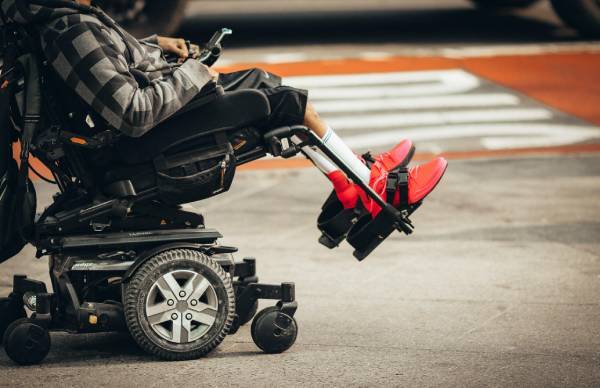If you’ve experienced a spinal cord injury, you may find the use of assistive technology or adaptive equipment very useful as you begin to return to your home and job. Assistive technology can aid in helping you to improve your physical functioning after injury and, in return, support you to better adapt back to the routine of daily living.
What is assistive technology?
Assistive technology is essentially classed as any product, software or equipment that is used to improve or maintain the functional capabilities of a person with disabilities. The use of assistive technology can offer opportunities for people with disabilities to fully emerge back into everyday life, all while increasing independence, control and security at home, work or during leisure activities.
The tools included can improve daily activities such as eating, grooming, toileting but are also subject to electronic aids such as controlling day-to-day appliances.
How assistive technology can support you at home
It can be extremely difficult to go from living an independent life to relying on loved ones or carers for support even in something that was once a simple task. Your independence may feel like it has been taken away from you entirely, but assistive technology can help someone with an SCI regain at least a degree of independence.
Assistive technology advances every year, to the point where it is now possible to control a home’s entire lighting system just through a mobile app. Smart home technology can even control the home’s temperature, televisions and an entire security system.
How assistive technology can help in day-to-day life
Travelling in a wheelchair will also help regain independence, however, those who can drive and have been affected by spinal cord injury may feel like they have lost their freedom to travel long distances.
With assistive technology, vehicles can be adapted to allow a driver to drive from their wheelchair, avoiding the hassle of transferring from wheelchair to car seat. While driving usually requires the use of both hands and feet, there is now plenty of adaptive vehicle equipment that even those with limited use of their upper body movement can manage.
Vehicle modifications depend upon the needs and requirements of an individual. Some cars will cater to tetraplegic by having touchpads for ignition, joysticks and shifting. For those with no lower body control, hand controls for acceleration and braking are available. It can take time to grasp the tools, but once mastered it can be a great way for those with SCI to gain their freedom back.
Wheelchairs in motion
Wheelchairs are most likely the first piece of equipment that someone with an SCI will consider. A wheelchair allows you to go just about anywhere that the most able-bodied person can. Wheelchairs make it possible for people with disabilities to go to work, go out with friends and run errands with ease. Depending on what someone’s needs are and what they might require, there are a huge variety of chairs to choose from, each offering different features such as performance ability.
Wheelchairs can be manual or power. A manual chair, which functions with the use of your arms, is suitable for someone who still has upper body strength and movement. Power wheelchairs are best for tetraplegics who may not have sufficient upper body strength.
As well as manual and power chairs, there are also numerous hybrid chairs available on the market. These chairs are essentially manual chairs that have been fitted with a motor, designed to give the chair an advantage with situations such as going up hills.
Claiming compensation
When it comes to purchasing assistive technology, the costs will soon add up depending on how much equipment you require. At Aspire Law, our solicitors will work with you to ensure that your compensation claim takes all reasonable needs into account. Get in touch with us today to discuss further.



